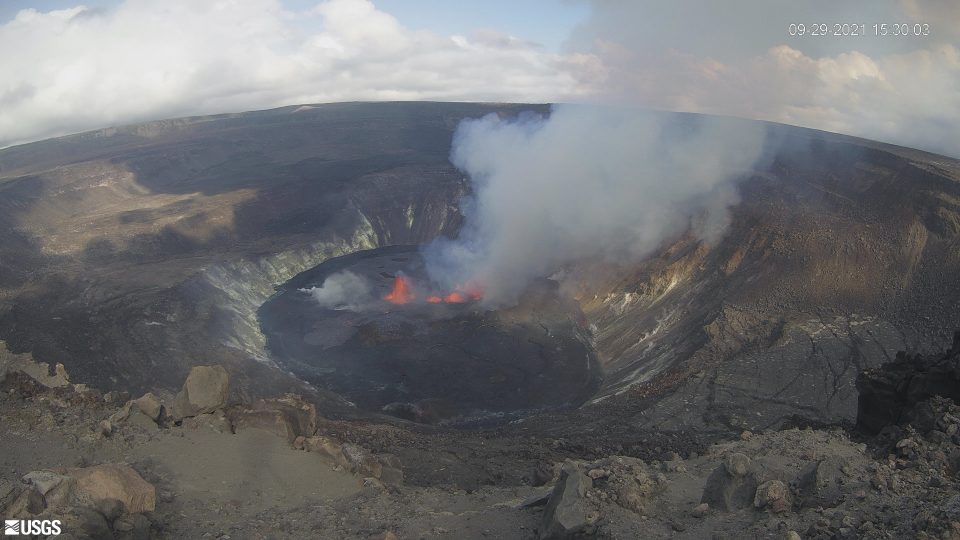
By Alfred Acenas and Charmaine Cirera-Raquel
EBC Hawaii-Pacific Bureau
HONOLULU (Eagle News) — At 3:20 p.m. Hawaii Time on Wednesday, September 29 , the US Geological Survey’s (USGS) Hawaiian Volcano Observatory (HVO) detected a glow in Kīlauea’s summit, indicating that an eruption has begun within the Halemaʻumaʻu crater of the summit caldera.
This new development began just four months after the end of the previous eruption, which occurred between December 2020 and this past May.
HVO also elevated the volcano alert level to WARNING and its aviation color code to RED, which means a volcanic eruption is underway, significant amounts of ash are present in the atmosphere, and all aircraft must avoid the area.
Meanwhile, Hawaii Volcanoes National Park remains open 24 hours a day, and park officials continually remind visitors to stay safe by following these precautions:
- Maintain a social distance of six feet (2 meters) from others, and wear a mask to reduce the spread of COVID-19. If sick, please visit another day.
- Volcanic eruptions can be hazardous and change at any time. Stay on marked trails and overlooks, and avoid earth cracks and cliff edges. Do not enter closed areas.
- Hazardous volcanic gases are billowing out the crater and present a danger to everyone, especially people with heart or respiratory problems, infants, young children and pregnant women.
- Slow down and drive safely. Expect long waits for parking spaces at popular vantage points like Uēkahuna (formerly the Jaggar Museum).
- Given an elevation of 4,000 feet (1,219 meters), the summit of Kīlauea can be chilly at any time. Bring a rain jacket, wear long pants and closed-toe shoes. Bring a flashlight if visiting at night.
“Viewing lava at the summit of Kīlauea is awe-inspiring. During this COVID-19 pandemic, we ask the public to recreate responsibly, maintain social distance, and to wear a mask,” said park superintendent Rhonda Loh. “We want to keep the park open for all to experience this new phase of volcanic activity, but we can only do so if visitors follow guidelines that keep everyone safe.”
Loh also said her team continues to work with USGS scientists to receive the latest volcanic updates. She reminds visitors that the eruptive activity and accessibility could change at any time.
(Eagle News Service)
